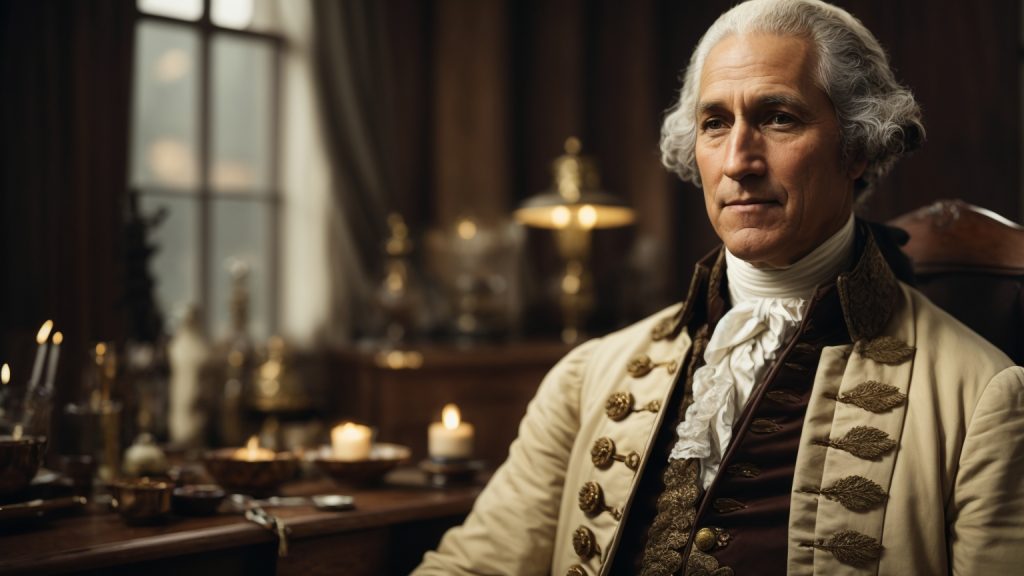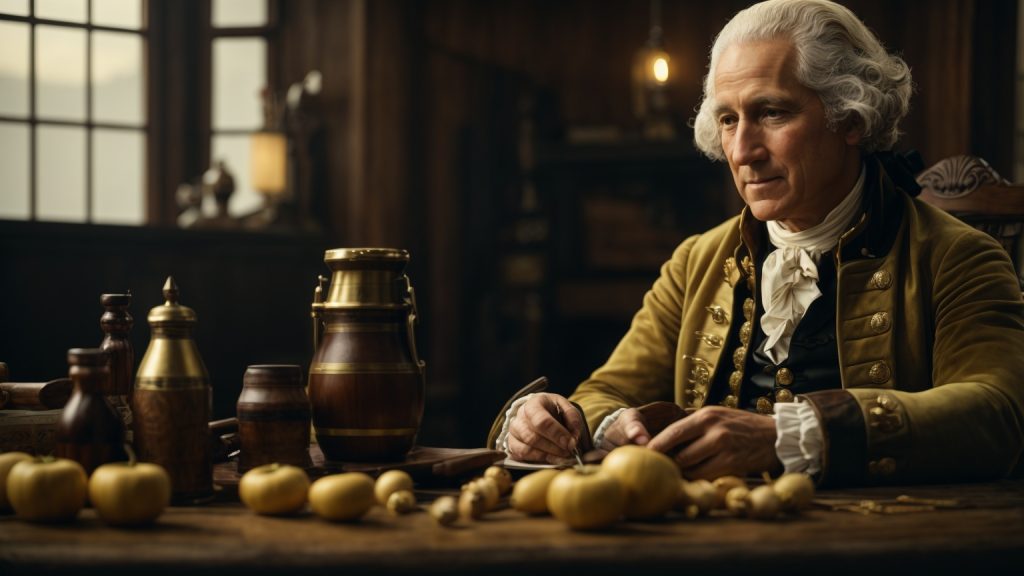If you’ve ever wondered which US president had wooden teeth, you might be surprised to learn that the answer is none. Despite the popular myth that George Washington had wooden teeth, the truth is that his dentures were actually made of a variety of materials, including ivory, animal bone, and even human teeth.
While the idea of wooden teeth may seem like an odd and uncomfortable concept, it’s important to remember that dental hygiene and technology were vastly different during Washington’s time. In fact, it’s estimated that by the time he became president, he had only one natural tooth left in his mouth. This led him to seek out various dental treatments, including the use of dentures, which were common among the wealthy at the time.
Despite the fact that Washington’s dentures were not made of wood, the myth has persisted for centuries. Some believe that the misconception arose due to the staining of the ivory used in his dentures, which may have given them a wooden appearance. Others speculate that the use of wooden dentures was more common in the past, leading to the assumption that Washington must have had them as well. Regardless of the origins of the myth, the truth is that no US president has ever had wooden teeth.
George Washington and Wooden Teeth Myth

If you’ve ever heard the story that George Washington had wooden teeth, you’re not alone. This myth has been circulating for centuries, but the truth is far less dramatic. Let’s take a closer look at the origins of the myth and the reality behind it.
Origins of the Myth
The story of George Washington’s wooden teeth can be traced back to the early 19th century, long after Washington’s death. At the time, dentistry was still a relatively new field, and many people suffered from dental problems. It was common for dentists to use a variety of materials to create dentures, including ivory, animal teeth, and even human teeth.
One of Washington’s dentists, John Greenwood, was known to use ivory in his dentures. Over time, the ivory would become stained and discolored, giving it a wooden appearance. It’s believed that this is where the myth of Washington’s wooden teeth originated.
Reality Behind the Myth
The truth is that George Washington did not have wooden teeth. While he did suffer from dental problems throughout his life, he never had dentures made entirely of wood. Instead, his dentures were made from a variety of materials, including ivory, animal teeth, and even human teeth.
In fact, Washington’s dentures were quite advanced for their time. They were designed to fit snugly in his mouth and were held in place with springs and wires. However, despite their advanced design, they still caused Washington a great deal of pain and discomfort.
So, while the story of George Washington’s wooden teeth may make for an interesting legend, the reality is far less exciting. Washington’s dental problems were a source of great pain and discomfort for him throughout his life, and his dentures were a testament to the limitations of dental technology at the time.
Dental Health in the 18th Century
During the 18th century, dental health was not a priority for most people. There was a lack of understanding about the importance of dental hygiene, and dental problems were prevalent. Tooth decay, gum disease, and tooth loss were common issues faced by people in the 18th century.
Common Dental Problems
Tooth decay was a significant problem in the 18th century. People consumed a lot of sugar and carbohydrates, which were harmful to their teeth. The lack of dental hygiene also contributed to the problem. People did not brush their teeth regularly, and there were no modern toothpaste or mouthwash products available.
Gum disease was another common dental problem. It was caused by the buildup of plaque on the teeth, which led to inflammation of the gums. This could result in bleeding, pain, and tooth loss.
Tooth loss was also a prevalent issue in the 18th century. It was caused by a variety of factors, including tooth decay, gum disease, and accidents. Tooth loss could lead to difficulty eating and speaking, as well as a loss of confidence in one’s appearance.
Dental Solutions and Prosthetics
In the 18th century, there were limited options for dental solutions and prosthetics. People often turned to home remedies such as rubbing their teeth with charcoal or salt to whiten them. Some people even resorted to using urine as a mouthwash.
Dentures were also a common solution for tooth loss. However, the dentures of the time were made from a variety of materials, including human teeth, animal teeth, and ivory. They were often uncomfortable and ill-fitting, causing pain and difficulty eating.
In conclusion, dental health was not a priority in the 18th century, and dental problems were prevalent. Tooth decay, gum disease, and tooth loss were common issues faced by people. Limited options for dental solutions and prosthetics were available, and they were often uncomfortable and ill-fitting.
Presidential Dental History

Presidents are often remembered for their accomplishments and legacies, but their dental health is not always discussed. However, many presidents have had dental issues that impacted their lives and public image.
Other Presidents with Dental Issues
George Washington is often associated with having wooden teeth, but this is actually a myth. Washington did have dental issues, however, and lost all of his teeth by the time he was president. He wore dentures made of materials such as human teeth, animal teeth, and ivory.
Other presidents who had dental issues include:
- John Adams: He had many dental problems and lost several teeth throughout his life. He also had a habit of clenching his jaw, which caused him to suffer from headaches and facial pain.
- Thomas Jefferson: He had poor dental health and suffered from toothaches and decay. He also lost several teeth over the course of his life.
- Ulysses S. Grant: He had a severe toothache during the Civil War, which led to the extraction of several teeth. He was also known for smoking cigars, which likely contributed to his dental issues.
Impact on Public Image
Presidents are often expected to be in good health, and dental issues can impact their public image. For example, Washington’s dental problems caused him to have difficulty speaking and smiling, which made him appear less confident and charismatic.
Other presidents also faced criticism for their dental issues. For example, Adams was known for his sunken cheeks and thin lips, which were likely caused by his missing teeth. This led to criticism of his appearance and suggestions that he was not fit for office.
In modern times, dental health is seen as an important aspect of overall health and hygiene. Presidents and other public figures are often expected to have good dental health, and those with dental issues may face scrutiny and criticism.